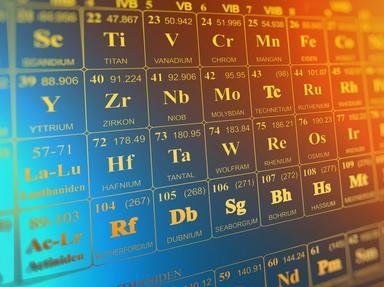Quiz Answer Key and Fun Facts
1. Which of the following is not a Dobereiner triad?
2. Atoms of elements in the same group of the periodic table have an equal number of which of the following?
3. Which of the following elements has the highest first ionization energy?
4. Nickel has an average atomic mass of 58.71, which is less than that of cobalt with 58.93. Why is nickel still after cobalt in the periodic table?
5. Which of the following react most readily?
6. Which of these produces an amphoteric oxide?
7. An Al3+ cation has a smaller __ compared to the neutral Al atom.
8. What is the trend of electronegativity in the Halogens' group?
9. The condensed electronic configuration of an element is [Ne] 3s2 3p5.
Which of the following would you NOT associate with the element?
10. Which of the following has the largest SECOND ionization energy?
Source: Author
pokho
This quiz was reviewed by FunTrivia editor
rossian before going online.
Any errors found in FunTrivia content are routinely corrected through our feedback system.
